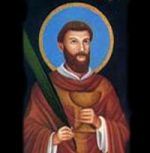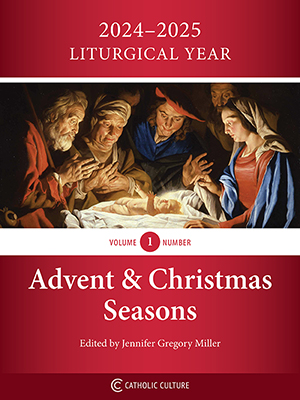Vatican II on Eastern Catholics
By Dr. Jeff Mirus ( bio - articles - email ) | Mar 29, 2010 | In On the Documents of Vatican II
The fourth document issued by the Second Vatican Council, on November 21, 1964, was the Decree on the Catholic Churches of the Eastern Rite (Orientalium Ecclesiarum). This is a very brief decree designed to set down the basic principles for the proper understanding and operation of Eastern Rite Catholic Churches within the whole body of the Church of Christ.
Orientalium Ecclesiarum must be read against the background of the prevailing attitudes of the preceding period which had led to a somewhat restricted understanding, and perhaps even somewhat restricted operations, of the Catholic Churches of the Eastern Rites. The Council wished to reaffirm the importance and the equality of the Eastern Catholic Churches, and so it begins by declaring:
The Holy Catholic Church, which is the Mystical Body of Christ, is made up of the faithful who are organically united in the Holy Spirit by the same faith, the same sacraments and the same government and who, combining together into various groups which are held together by a hierarchy, form separate Churches or Rites. (2)
It follows that:
[T]hese individual Churches, whether of the East or the West,…are, each as much as the others, entrusted to the pastoral government of the Roman Pontiff, the divinely appointed successor of St. Peter in primacy over the universal Church. They are consequently of equal dignity, so that none of them is superior to the others as regards rite and they enjoy the same rights and are under the same obligations, also in respect of preaching the Gospel to the whole world (cf. Mark 16, 15) under the guidance of the Roman Pontiff. (3)
The leaders (“hierarchs”) of the various Churches “with jurisdiction in one and the same territory should, by taking common counsel in regular meetings, strive to promote unity of action” (4), while at the same time each Catholic “must retain his own rite wherever he is, must cherish it and observe it to the best of his ability” without prejudice to the right of recourse to the Apostolic See.
Having established the value and importance of the Churches of the East, the Council
solemnly declares that the Churches of the East, as much as those of the West, have a full right and are in duty bound to rule themselves, each in accordance with its own established disciplines, since all these are praiseworthy by reason of their venerable antiquity, more harmonious with the character of their faithful and more suited to the promotion of the good of souls. (5)
Thus “all members of the Eastern Rite should know and be convinced that they can and should always preserve their legitimate liturgical rite and their established way of life, and that these may not be altered except to obtain for themselves an organic improvement.” The Council insists that all the faithful should be properly instructed in “knowledge and veneration” of the “rites, discipline, doctrine, history and character of the members of the Eastern rites”, and it even recommends that religious and associations of the Latin Rite working among Eastern faithful should found houses or provinces of the Eastern Rite “as far as this can be done” (6).
Next, the Council emphasizes that the patriarchate (the jurisdiction of one bishop over all the bishops, clergy and people of his own territory or rite) “has existed in the Church from the earliest times and was recognized by the first ecumenical councils” (7). Addressing the possibility of dissension among the patriarchates, the Council affirms that “all are equal in respect of patriarchal dignity, without however prejudice to the legitimately established precedence of honor” (8), and the Council decrees that “their rights and privileges should be re-established in accordance with the ancient tradition of each of the Churches and the decrees of the ecumenical councils,” that is, the rights and privileges “that obtained in the time of union between East and West” (9). This also applies to major archbishops who rule some individual Churches or rites (10).
Along with the restoration of the dignity of the patriarchate, the Council “confirms and approves the ancient discipline of the sacraments existing in the Oriental Churches” and wishes them to be re-established as circumstances may warrant (12), including the Eastern practice of the priest being the ordinary minister of Confirmation, using chrism blessed by a patriarch or bishop (13). The Council upholds the validity of the sacrament of confirmation performed by ministers of any rite for members of another rite (14), and it also decrees that faculties for hearing confession generally apply to all of the faithful within the entire territory of a Rite, and not just to members of the Rite in question (16). Finally, the Council wishes that the permanent diaconate should be restored in the Eastern Churches, wherever it has fallen into disuse, “in order that the ancient established practice of the Sacrament of Orders in the Eastern Churches may flourish again”, though it leaves the subdiaconate and minor orders to the legislative authority of each individual Church (17).
The Council also discusses the authority required to alter the feast days common to all Eastern Churches or of an individual Church, the importance of coming to an agreement on the date of Easter within each particular region, the right of the faithful to follow the established custom of a region with respect to the law of the sacred seasons, the importance of the Divine Office for both priests and faithful in the Eastern Rites, and the authority to regulate the use of languages in the liturgy (19-23).
The last section deals with relations with the separated Churches (i.e., Eastern Churches not in communion with Rome), stressing the requirement to promote unity (24) and to recognize the validity of the priesthood of those who may wish to come into union with Rome (25). For these reasons, the Council wishes to adopt a “rather mild policy” which permits the use of each others’ sacraments “where the needs of the salvation of souls and their spiritual good are impelling motives” (26), including common participation in sacred functions “for a just cause” (28). Thus separated Eastern Catholics with the right disposition may be admitted to the sacraments of Penance, the Eucharist and Anointing of the Sick; and Catholics may ask these sacraments of separated Churches “as often as necessity or a genuine spiritual benefit recommends such a course and access to a Catholic priest is physically or morally impossible” (27). But the Council warns:
Common participation in worship (communicatio in sacris) which harms the unity of the Church or involves formal acceptance of error or the danger of aberration in the faith, of scandal and indifferentism, is forbidden by divine law. (26)
Orientalium Ecclesiarum concludes by asking all Catholics, whether Eastern or Western, “to pray to God fervently and assiduously, nay, indeed daily, that, with the aid of the most holy Mother of God, all may become one” (30).
Previous in series: Vatican II on the Church: Mary
Next in series: Vatican II on Ecumenism: Principles
All comments are moderated. To lighten our editing burden, only current donors are allowed to Sound Off. If you are a current donor, log in to see the comment form; otherwise please support our work, and Sound Off!








